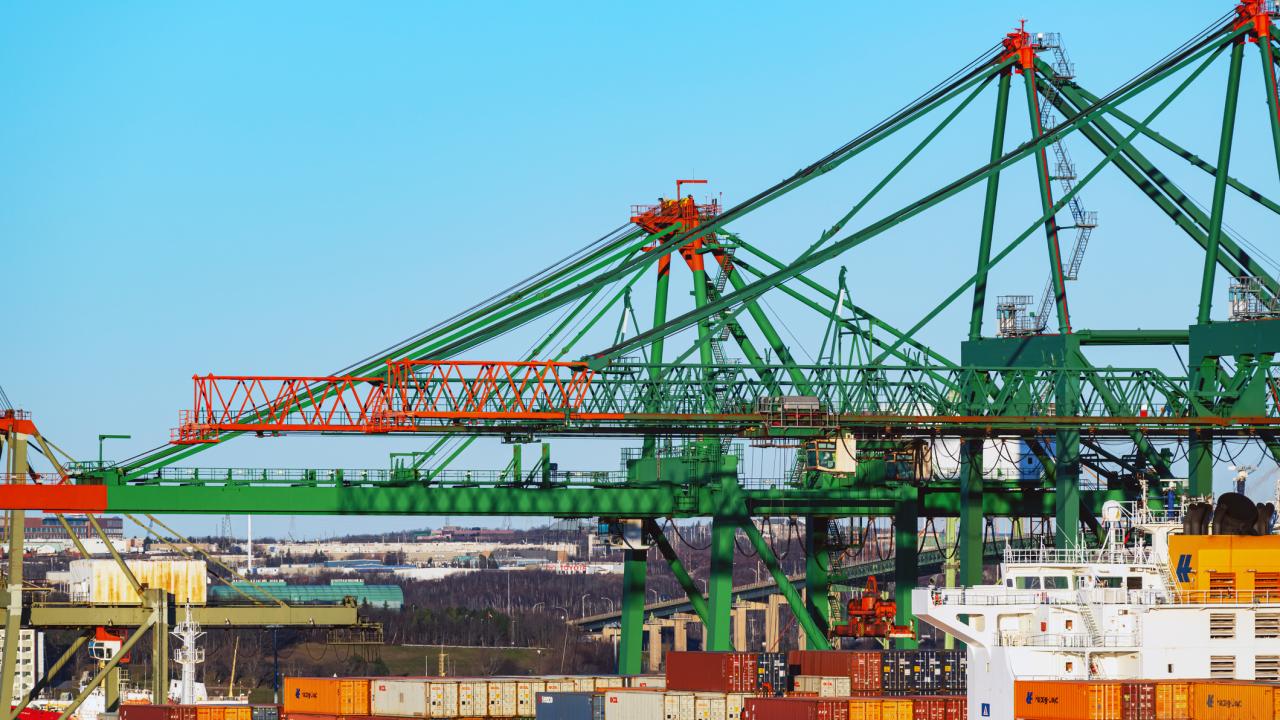The United States could achieve modest economic benefits by applying uniform tariffs on all trade partners, according to new research led by a University of California, Davis, economist. However, the complicated realities of supply chains, global trade and its downstream effects on people and businesses could offset economic gains and even lead to significant losses.
“The Trump administration’s tariffs represent a significant experiment in economic policy with both potential benefits and substantial risks,” said Ina Simonovska, a UC Davis associate professor of economics and lead author of a new paper. She is also a senior associate at the Center for Strategic and International Studies.
The paper, “Making America Great Again? The Economic Impacts of Liberation Day Tariffs,” was published this week in the Journal of International Economics.
In the paper, researchers analyzed the U.S. proposed tariff schedule released on so-called “Liberation Day” in April as well as various trade-war scenarios with major trade partners. They also looked at a unilaterally optimally designed tariff system, analyzing policy effects on welfare, exports, imports, deficit, employment and consumer prices.
Positive outcomes are possible, but the policy’s long-term sustainability depends on multiple factors, most of which are out of the United States’ control, she said. So far, the United States has avoided tariff retaliation by other countries, which is significant for the U.S. economy, she said.
Supply chains, global trade
Using a model of the global economy that incorporates trade and supply chain linkages, the authors show that a unilaterally optimally designed tariff of 12.5%, which the United States would apply to all trade partners, could reduce the U.S. trade deficit by 13% and raise U.S. economic welfare by as much as 2.15%. However, these gains would evaporate when trade partners retaliate, Simonovska said.
Supply chain linkages describe the interdependence of how goods are made among various countries or trade partners, for example, with raw materials coming from more than one country and manufacturing and distribution happening in yet other countries, complicating tariff structures.
The proposed changes in tariffs can have a ripple effect on the economy, researchers said.
The gains that the United States can achieve through tariffs are what economists term “Beggar thy neighbor,” Simonovska said. This means that the gains come at the expense of trading partners. Smaller countries such as Canada, Mexico, Ireland and several Southeast Asian nations — whose exports to the United States represent a significant share of their GDP — are the most harmed by the proposed tariffs.
When trade policy creates costs for key partners, alliances can be strained, researchers said. Partners may look to reduce their dependence on the United States and form other alliances.
Revenue realities
The administration has promoted tariffs as a fiscal tool, but the numbers tell a more sobering story, researchers said. Tariffs can generate revenues that account for up to 5% of the federal budget, thus offsetting projected deficit increases due to the “One Big Beautiful Bill Act,” which has become law.
Moreover, the federal government would only benefit if tariff revenue is used to eliminate inefficiencies in the economy, such as replacing income taxes on labor. Lump-sum transfers to Americans, which has been discussed by the administration, would wash out all potential gains, however, researchers said.
Tariff costs fall disproportionately on lower-income households, who spend a greater share of their income on tradeable goods, Simonovska said. This regressive impact creates tension with stated policy goals of supporting working-class Americans and highlights the complex relationship between trade policy and domestic inequality.
Further, industries that rely heavily on imports that are not easily replaced with domestic alternatives will suffer because of these tariffs, researchers said. Small- and medium-sized enterprises could have difficulty navigating the new tariff structure and lack resources to absorb cost increases that larger competitors can manage more effectively, researchers said.
Besides Simonovska, co-authors include Anna Ignatenko of the Norwegian School of Economics; Luca Macedoni, University of Milan; and Ahmad Lashkaripour of Indiana University.
Media Resources
Media contact:
- Karen Nikos-Rose, News and Media Relations, kmnikos@ucdavis.edu, 530-219-5472
